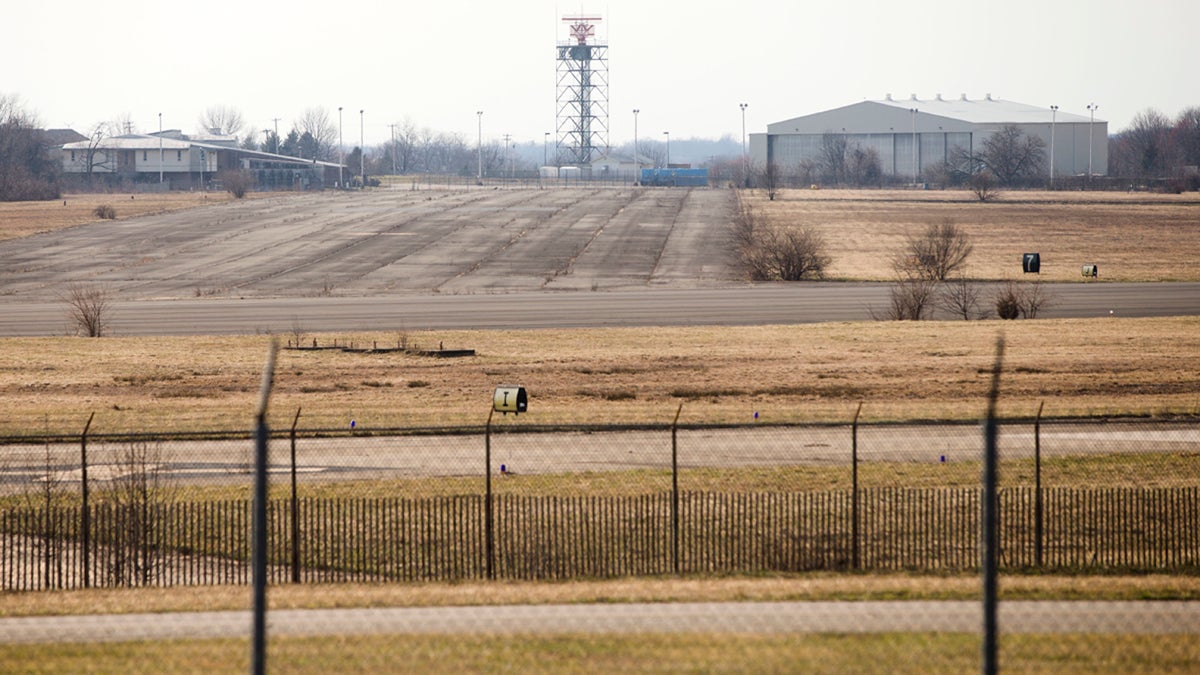Concerns about drinking water contamination in Bucks, Montco spur calls for stricter standards
Listen
The former Naval Air Station Joint Reserve Base Willow Grove and present day Horsham Air Guard Station is in Horsham
When it comes to your drinking water, how much of a hazardous material is too much?
Last year, the Environmental Protection Agency recommended that residents of Hoosick Falls, New York, stop drinking or cooking with water tested at about 100 parts per trillion of the chemical PFOA.
The Navy took nearly 100 (mostly private) wells offline in Bucks and Montgomery counties for testing at levels of more than 400 parts per trillion, four times higher than the actionable standard in New York.
Seeing this discrepancy, concerned residents and elected officials in the Warminster, Warrington and Horsham areas of Bucks and Montgomery counties say the actionable level of an instance of PFOA in their water supply should be lowered.
PFOA, or perfluorooctanoic acid, can be found in a variety of consumer goods, including those with Teflon coating. In Hoosick, a plastics factory takes the blame for contaminating the drinking water.
PFOA is also a component in high-powered firefighting materials, such as those used in firefighting simulations at former military bases in Warminster and Horsham for decades. The federal Department of Defense launched an investigation into these and some 664 other sites across the country last year.
PFOA, along with other members of a family of compounds called perfluorinated chemicals (PFCs), are characterized as an “emerging contaminant” by the Environmental Protection Agency, or a “chemical or material that is characterized by a perceived, potential, or real threat to human health or the environment or by a lack of published health standards.”
In practical terms, that means direction on what is a safe level depending on who is setting the standard and what studies are referenced. The EPA’s standing provisional advisory level is 400 parts per trillion, but some states, including New Jersey, have done their own research and set much lower levels for what is considered safe.
When not enough is known about the health effects of an environmental contaminant, the local response can differ, according to a statement from EPA spokesman Mike D’Andrea.
“EPA’s advice was a result of specific circumstances that existed in that community, including the fact that: 1) free bottled water was being made available to everyone in the community; and 2) the state health department had already offered to test, for PFOA, the private well of everyone in the town who requested such testing,” D’Andrea noted. “EPA’s recommendation was also based on site specific information as well as information in the most recent EPA report on PFOA toxicity which underwent external peer review in August 2014.”
Concerned residents see that as a sign the Navy — which is responsible for providing safe drinking water to those affected — and officials in Bucks and Montgomery counties should be doing more.
“It’s a political hot potato,” said Warminster Environmental Advisory Council member Larry Menkes. “The initial reaction was, we don’t have to give people the impression it’s our responsibility. And my reply to that was, the health and safety of our residents is your responsibility.”
This week, the Warminster Environmental Advisory Council passed a resolution urging the Navy to lower the level at which it would intervene to the same level as Hoosick Falls, 100 parts per trillion.
In a letter, U.S. Rep. Mike Fitzpatrick pledged he would also urge the Navy to adopt “a lower, standardized action level while additional research and steps are undertaken.” He also said the Navy should provide for people with private wells with any detectable PFOA to be connected to public water.
A cohort of military agencies have committed to spending $19 million remediating the contamination, but lowering the standard would drive that cost up by providing for more people, said Menkes.
“The lower you recognize the standard as being, the more expensive it gets to take care of the people,” he said.
The EPA is expected to release new guidelines on safe levels of PFOA in water withing weeks.
WHYY is your source for fact-based, in-depth journalism and information. As a nonprofit organization, we rely on financial support from readers like you. Please give today.

